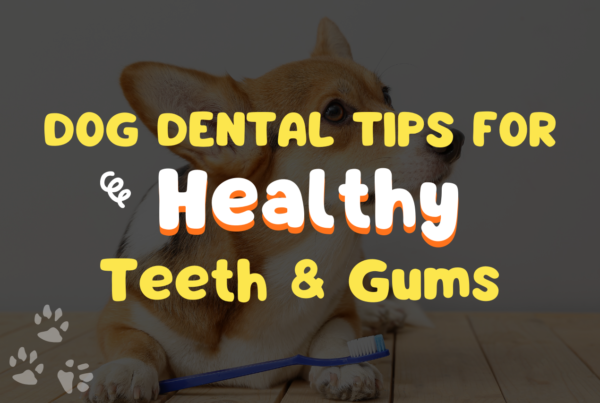
Although it is extremely amazing to welcome a new litter of puppies into the world, canine pregnancies may be confusing and stressful, as well as time-consuming and financially draining. So how long are dogs pregnant? A lot of research will be required before you get started with breeding your dog.
The breed standard and individual breed health test recommendations should be familiar to you, as should be the duties you will have in raising healthy, well-socialized puppies. You’ll also need to be aware of the signs of pregnancy in dogs, as well as the best ways to care for your pregnant dog. Here are the explanations to some of the questions you had.
Signs That Your Dog Is Pregnant
It is usually difficult to tell when a dog is pregnant, especially at the beginning of the pregnancy. You may notice that your dog has gained a little weight, but this is not uncommon in dogs. Because they have been receiving a lot of additional treats or because their exercise schedule has been slashed recently, your dog may have put on some extra weight.
However, as time passes, it will become increasingly clear that your dog is pregnant.
How to Tell if a Dog Is Pregnant
Because dogs do not have the option of purchasing a pregnancy test kit from a pharmacy, we must rely on alternative methods to establish whether or not a dog is pregnant. Diagnostic testing is the most accurate method of determining whether or not a dog is pregnant.
Ultrasound
Early on in gestation, an ultrasound is the best technique to find out if a dog is pregnant. Ultrasounds are recommended between the 25th and 35th day of pregnancy by veterinarians.
Ultrasounds not only detect pregnancy, but they can also determine whether or not the fetus is alive by registering the fetus’s heartbeats throughout the procedure. As well as ruling out other potential causes of uterine distension, such as pyometra, ultrasounds can also aid in determining the gestational age of the fetus.
X-ray
Breeders can use an x-ray to determine how many puppies they can expect from their dog. Due to the fact that the fetal skull and spine do not become visible on an x-ray until days 42 through 45 of pregnancy, x-rays are most effective later in the pregnancy.
Delaying an elective delivery till after day 55 helps veterinarians to provide a more precise count of how many puppies are expected and to choose the optimal time to perform the procedure.
Palpation
Your veterinarian can do belly palpation starting roughly the 28-30-day mark if you know the date your dog was bred. When the puppies are at this stage of development, they have the appearance of small golf balls or grapes, depending on the size of the dog. These “balls” are actually fluid-filled sacks that encircle and protect the fetus.
It is not recommended to undertake abdominal palpation without the assistance of a veterinarian since it may cause harm to the pups. After one month, the sacks lose their characteristic structure, hence the timing of this test is critical.
Hormone test
Your veterinarian can run a blood test to check the dog’s hormone levels to see if she is releasing the hormone relaxin at around 25-to-30 days into her pregnancy. Relaxin is only created during pregnancy, hence the test is relatively accurate in that regard.
Prepare Your Dog for Motherhood
You should seek advice from your veterinarian as soon as you observe possible symptoms of pregnancy, as this will allow you to be sure your dog and her litter remain healthy during the pregnancy.
Your veterinarian will also be able to provide you with a more accurate estimate of the due date and the size of the litter. Preparing and educating yourself ahead of time is the most effective approach to ensure that your dog gives birth to a healthy litter of adorable newborn puppies in a safe environment.
What Should You Feed Your Pregnant Dog?
Before she is mated, she must be in good physical shape. Prior to mating, a veterinarian should evaluate both the male and female dog to ensure that they are healthy.
Consult with your veterinarian before giving nutritional supplements and vitamins to your dog.
After mating, the mother’s food consumption should stay constant for the first two-thirds of her pregnancy (approximately six weeks after mating). Ensure that you feed your dog a premium, high-quality diet that has been approved by your veterinarian while she is pregnant.
A diet high in omega-3 fatty acids (DHA) should be provided to your dog during pregnancy in order to aid puppy growth in utero as well as during lactation.
How Long Are Dogs Pregnant?
The average dog gestation duration is 63 days, or around nine weeks. The entire pregnancy can be divided into three stages, each of which corresponds to one of the three months of the pregnancy.
The First Month of Pregnancy
In most cases, breeding happens when the female dog is receptive to the male, which normally occurs 10–20 days into her heat cycle, and when her eggs are fertilized. Bear in mind that, due to the large number of eggs laid by canines during ovulation and conception, it is possible for dogs to conceive with more than one father in the same litter of puppies.
Once fertilization has taken place, the embryos move into the horns of the dog’s Y-shaped uterus and embed themselves into the uterine lining, resulting in the birth of a pup. Embryo development is now taking place. You may begin to notice changes in your dog’s appetite and energy levels.
After about 25-28 days of pregnancy, a veterinarian can feel the developing embryos with her hands (please leave this exam to a trustworthy specialist so that the pregnancy is not jeopardized) and can identify heartbeats with an ultrasound.
The rising amount of fluid in the uterus in the coming days will prevent the puppies from being palpated until they are closer to delivery. As the growth of her litter continues at such a rapid pace, your dog’s appetite will continue to grow. Make sure she has plenty of food accessible to her during these times of heightened demand.
The Second Month of Pregnancy
Your pregnant dog is now in stage two. Embryos become fetuses at this stage. The fetuses’ weight will increase considerably (up to 75%!) as they grow and develop organs. and your dog’s belly will grow. You may notice she starts eating smaller meals more frequently.
The fetuses’ coats and skeletons are forming as your dog’s belly grows larger and more hard. Swollen breast tissue, black nipples and colostrum (also known as “first milk”) flowing from your dog’s nipples are all signs of lactation. She may start losing her tummy hair.
The fetuses may also move beneath her skin. Your dog’s abdomen may be moving a lot, indicating anxiousness or a desire to seek a safe, peaceful area to deliver her litter. Help her make her nest by providing clean blankets, towels, and/or newspapers in a kiddie pool, box, or other enclosed area.
Remember that her bedding will be damaged during birth. You’ll need more blankets to line the nest after the baby is born.
The Third Month of Pregnancy
Almost all of the puppies’ developmental stages are completed by the 58th day of pregnancy, and they will begin to shift into birthing position in the mother’s birth canal during the final days of her pregnancy. At this point, the mother will most likely get restless, panting and walking around, and she will most likely have a loss of appetite as well.
In addition, the body temperature drops approximately 12 to 24 hours before delivery begins. The restlessness and refusal to eat that your pregnant dog exhibits will persist once the labour begins. Vomiting and clear vaginal discharge are both possible during this phase.
After that, the puppies will arrive. Labor itself can last from a few hours to a whole day depending on the circumstances. However, it should not linger for more than 24 hours at a time. Puppies will arrive one at a time, approximately every half hour or so, but they should not appear at intervals greater than two hours in total duration.
Issues to Watch for After Your Dog Gives Birth
Vaginal Discharge
After the puppies are born, the vaginal discharge may continue in small amounts for up to eight weeks. Because it is primarily composed of old blood, the discharge will typically appear reddish-black in color.
A visit to the veterinarian should be scheduled for your dog as soon as the discharge becomes excessively bloody, has an odor, or seems to be pus-like in appearance.
Eclampsia (Drop in Blood Calcium Levels)
Eclampsia is a condition that can arise within the first three weeks after giving birth and is caused by the mother’s failure to keep up with the calcium requirements of nursing. Toy breeds are most commonly affected, and calcium supplementation during pregnancy increases a dog’s risk of developing this illness.
Dogs suffering with this ailment will exhibit signs such as restlessness, muscle spasms, a stiff stride, and sometimes convulsions. If you notice any of these behaviors in your pet, please contact your veterinarian as soon as possible.
Agalactia (Not Producing Milk)
Agalaccia occurs when the dog’s milk does not produce or does not get “let down” as it should. You should seek veterinarian attention immediately if your puppies are sucking well but are not obtaining any milk.
The first milk, referred to as “colostrum,” provides the puppies with the nutrients and antibodies they require from their mother to help them develop their natural immunity to infections. Veterinary care may be required if they do not receive these vital nutrients during their first few days of their life. If this does not occur, they may require additional veterinary care.
Bottom Line
Dogs and their owners may experience stress during pregnancy, but this does not have to be the case. The more you know about dog pregnancy before your dog becomes pregnant, the better equipped you will be to care for your dog during her pregnancy. Your veterinarian can provide you with additional information regarding dog pregnancy.
And keep in mind that your responsibilities have only just begun. The task of caring for newborn puppies also takes up a lot of your time, because you want to make sure that the puppies are healthy, well-socialized, and placed in good homes.






